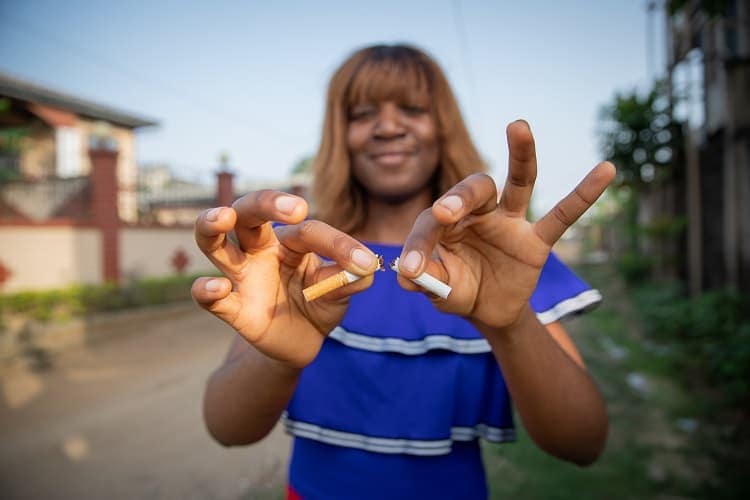African American People and Cancer

If you are a Black or African American person, you can take steps to lower your risk of getting cancer.
Compared to members of other races, Black and African American people have higher rates of getting and dying from many kinds of cancer.
- Black people have the highest death rate for cancer overall.
- Black people have a lower overall 5-year cancer survival rate than White people.
- Black people are more likely than White people to be diagnosed with female breast, lung, and colorectal cancers at a late stage. Cancer is harder to treat after it spreads from the place where it started to other parts of the body.
Many cancers can be prevented. Staying away from tobacco smoke, keeping a healthy weight, drinking little or no alcohol, and getting human papillomavirus (HPV) vaccinations on time can lower the risk of getting cancer. Screening tests can prevent some cancers or find them early, when treatment works best. Some of these risk factors vary by race and ethnicity.
- More Black men than White men say they smoke cigarettes now.
- Non-Hispanic Black Americans are more likely than other groups to be exposed to smoke from other people’s cigarettes, called secondhand smoke.
- Obesity is most prevalent among non-Hispanic Black adults.
- Non-Hispanic Black adults are less likely than non-Hispanic White adults to engage in heavy drinking.
- Overall, non-Hispanic Black adults are less likely than non-Hispanic White adults to be vaccinated against HPV. HPV vaccines help prevent several kinds of cancer.
- Black people are more likely than White people to be up to date on screening tests for colorectal, breast, and cervical cancer.
Note: In the statistics above, some comparisons are only between race categories, while others are between race and ethnicity categories (non-Hispanic or Hispanic).
How to Lower Your Risk
This video explains why younger women who are African American tend to be diagnosed with early breast cancer more often than young women who are members of other racial and ethnic groups.
You can take steps to lower your risk of getting cancer.
Note: Some comparisons are only between race categories, while others are between race and ethnicity categories (non-Hispanic or Hispanic).
Prostate Cancer
Black men are more likely to get prostate cancer than men who are members of other racial or ethnic groups. They are more than twice as likely to die from prostate cancer than other men. Learn about the possible benefits and harms of prostate cancer screening. Then talk to your doctor about your own risk and decide if screening is right for you.
Breast Cancer
Overall, White women are more likely to get breast cancer than Black women, but Black women are more likely die from the disease. Breast cancer is often diagnosed at later stages and is more aggressive in African American women than in White women. Know how your breasts normally look and feel. Talk to your doctor if you notice changes.
Lung Cancer
Black men have the highest rates of developing and dying from lung cancer. If you smoke, try to quit, and stay away from other people’s cigarette smoke. If you’re 50 to 80 years old and smoke now or quit in the last 15 years, lung cancer screening may be right for you.
Cervical Cancer
Black women are more likely to die from cervical cancer than other women in the United States. If you’re 26 years old or younger, make sure you’re vaccinated against HPV. HPV causes almost all cervical cancers. If you’re 21 to 65 years old, get screened for cervical cancer regularly.
What CDC Is Doing
CDC helps all people lower their cancer risk and get the right screening tests at the right time. CDC works with communities to find the best ways to prevent and control cancer and put these practices into action.
The U.S. Cancer Statistics Data Visualizations tool provides many statistics by race and ethnicity. These statistics include rates of new cancers and cancer deaths, stage at diagnosis, 5-year relative survival, cancer prevalence, cancer screening, and risk factors.


